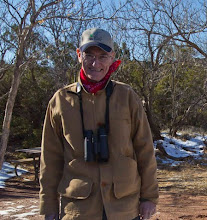Journey with me and my wife Kathy to Panama. We'll stand atop a canopy tower to see bir
 ds and wildlife that live high in the tree tops. Walk the Achiote Road and Pipeline Road to search for birds. Visit the Cerro Azul Foothills and San Lorenzo Park for feeding stations and a chance to study and photograph bird at close range. Limited to 12 participants.
ds and wildlife that live high in the tree tops. Walk the Achiote Road and Pipeline Road to search for birds. Visit the Cerro Azul Foothills and San Lorenzo Park for feeding stations and a chance to study and photograph bird at close range. Limited to 12 participants.Close-up views of wildlife including three-toed sloth, white-necked jacobin, speckled tanager, blue cotinga, and slaty-tailed trogon make this an must journey for photographers, birdwatchers, and nature lovers. Native guide with us throughout the trip.
$3195 includes lodges, ground trans
 portation, and some meals. Air to Panama is extra. Request a brochure or Strabo Tours for details.
portation, and some meals. Air to Panama is extra. Request a brochure or Strabo Tours for details.
Tanzania, Africa May 19-June 3, 2012
Intensive game viewing wiht only 5 people per vehicle. Serengeti National Park, Ngorongoro Crater, Tarangire, and Lake Manyara National Park.
Ideal for photographers, birdwatchers, and nature loving traveling companions.
$7895 lodges, ground transportation covered plus most meals. Airfare extra.
Request a brochure
Ecuador & the Galapagos Islands July 16-26, 2012

10-day land and cruise program with Gary and Kathy to the Galapagos Islands, including one day in the lowlands of Ecuador. Price includes Quito/Galapagos Islands airfare, Galapagos National Park fees, and tourist card. 7-nights aboard the 16-passenger motor yacht Daphne. Limited to 14 participants.
Close-up views of wildlife including red-footed booby, great frigatebird, waved albatross, and Galapagos tortoise make this an amazing journey for photographers, birdwatchers, and naturalists. Native guide with us throughout the trip.

Optional day with me to hunt for the Andean Condor and highland birds in Antisana
$4995 includes lodges, boat, ground transportation, airfare from Quito to Galapagos, tourist card, park fees and some meals. Air to Ecuador is extra. Request a brochure or Strabo Tours for details.
Peru Photography: Machu Picchu and Amazon Wildlife October 4-14, 2012
Explore two diverse parts of Peru with Kathy Adams Clark and your camera. Visit the Manu area of the Amazonian lowlands for scarlet macaw, parrots, monkeys, 110-foot canopy tower, tapir look-out blind, and canoeing for marsh birds.
Then fly to Cusco for the Sacred Valley, markets, and Machu Picchu. We'll get two days in Machu Picchu so we can photograph this amazing site in different light and weather. Limited to 12 participants.
Photographers of all skill levels are welcome. Great trip for non-photographing spouse, friends or companions. Native guide with us throughout the trip.
$5195 includes lodges, transportation to Manu, and some meals. Air to Peru is extra. Request a brochure or Strabo Tours for details.









